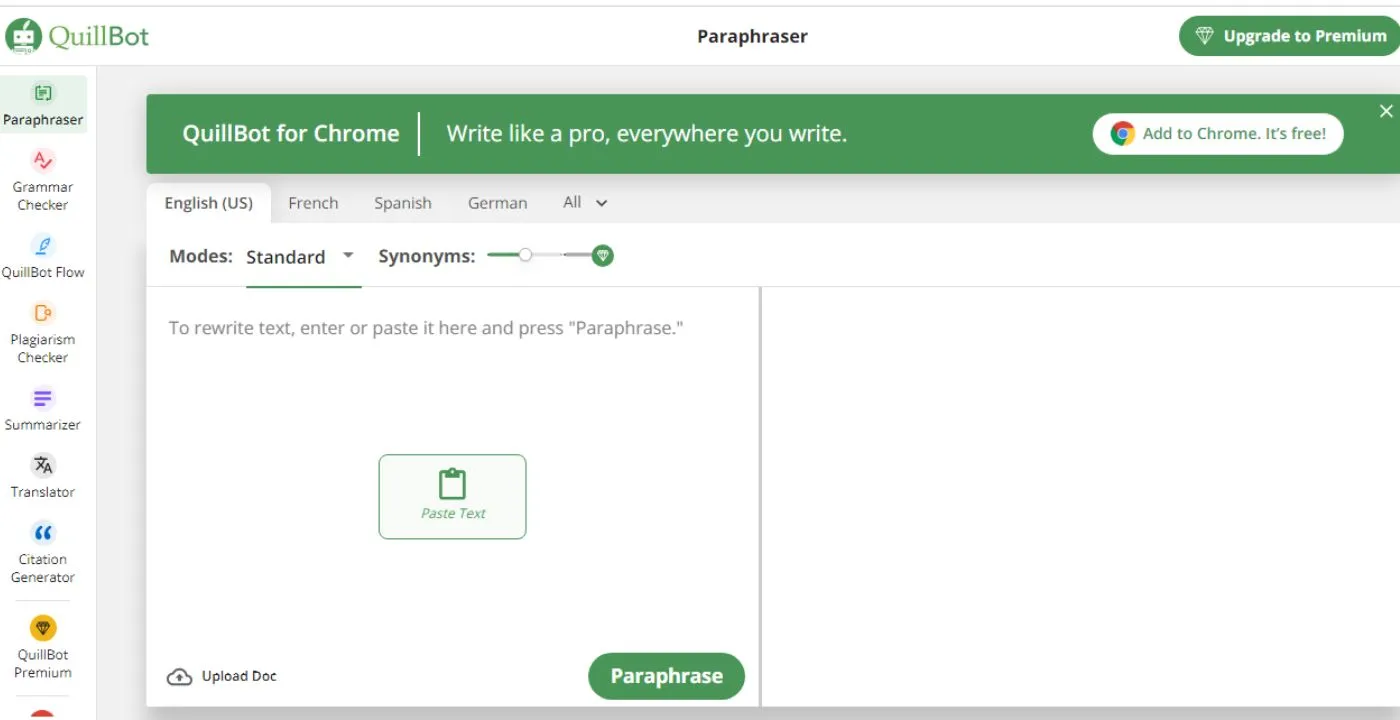Upholding moral standards is critical in the field of academics. The concern that their writings and tasks may be found plagiarized measures large in the minds of students. A popular tool for detecting plagiarism, SafeAssign, is essential to maintaining academic honesty. At the same time, there are concerns over Quillbot detect by SafeAssign and other writing assistance tools’ compatibility with detection techniques.
What is Quillbot?
Quillbot is an artificial intelligence (AI) writing tool designed to help improve and enhance writing. To enhance writing quality, it provides capabilities like summarizing, paraphrasing, and changing sentence structures. Users can enter text and get updated versions with more coherence and clarity while preserving the original context. Quillbot’s powerful language alteration features make it an invaluable tool for anyone looking to improve the quality of their work.
What is SafeAssign?
In academic settings, SafeAssign is a popular plagiarism detection program. When incorporated into learning management systems, it searches through a large database of past submissions, scholarly articles, and online resources to match submitted materials. SafeAssign compares the submitted work with pre-existing texts to find similarities in the content and perhaps identify instances of plagiarism. Its main goal is to maintain academic integrity by pointing out possible matches and assisting teachers in making sure that student submissions are unique.
Is QuillBot Detectable?
The main purpose of Quillbot is to assist with sentence restructuring and synonym creation in order to make text easier to read. However, a number of variables have a major role in how easily identifiable text created or altered by QuillBot is. In some cases, especially if the language is significantly changed it may become difficult to identify QuillBot’s involvement. Still, some patterns or aesthetic details may point to automatic support.
Although QuillBot tries for natural language output, it may be able to be detected with careful examination or by getting to know with its particular output tendencies. Coherence, grammar, and context may also help to identify material that has been altered by these kinds of techniques. Modifying writing styles, adding personal observations, and making sure context is relevant could make QuillBot’s contribution harder to identify.

Can Quillbot Detect By Safeassign?
There is debate over is Quillbot detect by SafeAssign. In order to detect possible plagiarism, SafeAssign looks for similarities between submitted work and already published sources. AI-based writing tool Quillbot has the ability to significantly modify language, which could make detection more difficult. Still, SafeAssign upgrades its algorithms frequently to improve detection performance. Quillbot’s detectability is dependent on various factors, including the degree of text alteration and SafeAssign’s dynamic detection algorithms. Quillbot might make it difficult to identify it directly, but no tool can ensure total avoidance of detection. Users need to put ethical use first, realizing how crucial academic integrity is. When Quillbot is used as a writing tool instead of a way to get around plagiarism detectors, it encourages moral and responsible behavior in learning environments.
Is QuillBot Effective for Rewriting Texts?
QuillBot uses artificial intelligence (AI) to paraphrase statements while preserving their original meaning, making it a helpful tool for rewriting writings. To increase text accuracy, some of its features include phrase restructuring, synonym suggestions, and contextual comprehension. However, the degree of original text quality, context, and complexity all affect how effective it is. QuillBot can provide satisfactory outcomes for short sentences or straightforward topics, saving time compared to manual rephrasing. It improves readability and is useful for activities such as paraphrasing essays and articles or creating several versions of a content. However, in order to ensure accuracy and coherence, human assistance may be required for highly specialized or delicate writing.
Does SafeAssign Have the Ability to Detect Chegg?
SafeAssign is unable to identify Chegg or any other external website by name. It does, however, highlight content that matches sources in its database, such as scholarly publications, publicly accessible content, and previously submitted works. It does not specifically identify Chegg, yet it may detect similarities between submitted assignments and information from Chegg. There is variety in Chegg’s content, and SafeAssign uses its own library. It is not an automatic tool in SafeAssign, but teachers can manually look into odd matches and cross-reference Chegg or similar platforms if they detect academic dishonesty.
What is the Duration for SafeAssign to Keep Papers?
Papers are usually stored in SafeAssign’s database for an indefinite period of time. The length of time that submitted papers are kept in the SafeAssign system is not made public. To improve its ability to identify plagiarism, it is intended to keep track of documents in a library. For further information about SafeAssign data retention policies, instructors and students may speak with the appropriate management or consult their institution’s policies.
How does QuillBot outperform SafeAssign?
SafeAssign and QuillBot have distinct uses. QuillBot concentrates on text improvement and paraphrasing, whereas SafeAssign is a plagiarism detector. In order to help with content refinement, QuillBot is excellent at rephrasing sentences by offering synonym suggestions, restructuring, and enhancing fluency. On the other hand, SafeAssign is an academic credibility supporter that specializes in comparing submitted work to its database in order to find similarities with other sources. Strengths: QuillBot specializes at creative text modification, while SafeAssign makes sure content matches are unique. Although both are useful in their own right, QuillBot specializes in improving text coherence and fluency, while SafeAssign is essential for maintaining academic integrity by identifying possible plagiarism.
Can SafeAssign Identify Copy-Paste?
Yes, by comparing submitted texts with its large collection of scholarly literature, online resources, and previously submitted works, SafeAssign is able to detect copy-pasted content. It highlights passages that exactly match or strongly resemble other texts, signaling similarities between the content that was supplied and the sources that are already available. This includes pasting text directly without properly citing or paraphrasing it. By identifying duplicate content in submitted works, SafeAssign assists teachers in identifying examples of plagiarism and promotes creativity and appropriate citation practices among students.
Conclusion
The main purpose of SafeAssign is to identify plagiarism by comparing submitted work with several sources. Importantly, SafeAssign it’s not write to say that Quillbot detect by SafeAssign; rather, it is capable of identifying text similarities and matches, including content created or updated using QuillBot-like tools. It highlights passages that are very similar to already published sources. By identifying possible instances of plagiarism, whether they come from direct copying, paraphrasing, or using AI-assisted techniques, SafeAssign supports educators in upholding academic integrity. As a result, although SafeAssign can detect content similarities, it cannot specifically identify the role of QuillBot or any other particular writing tool.




